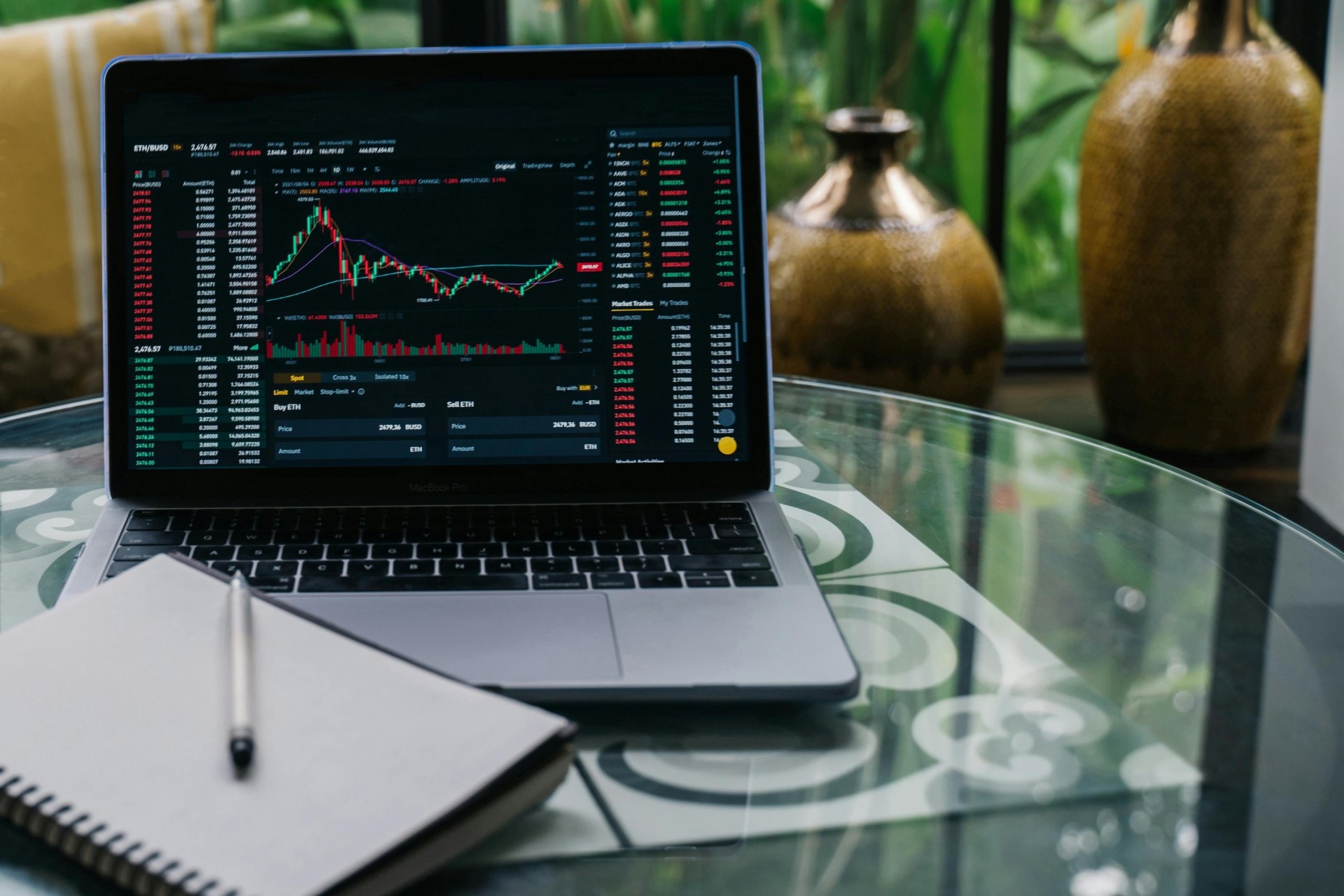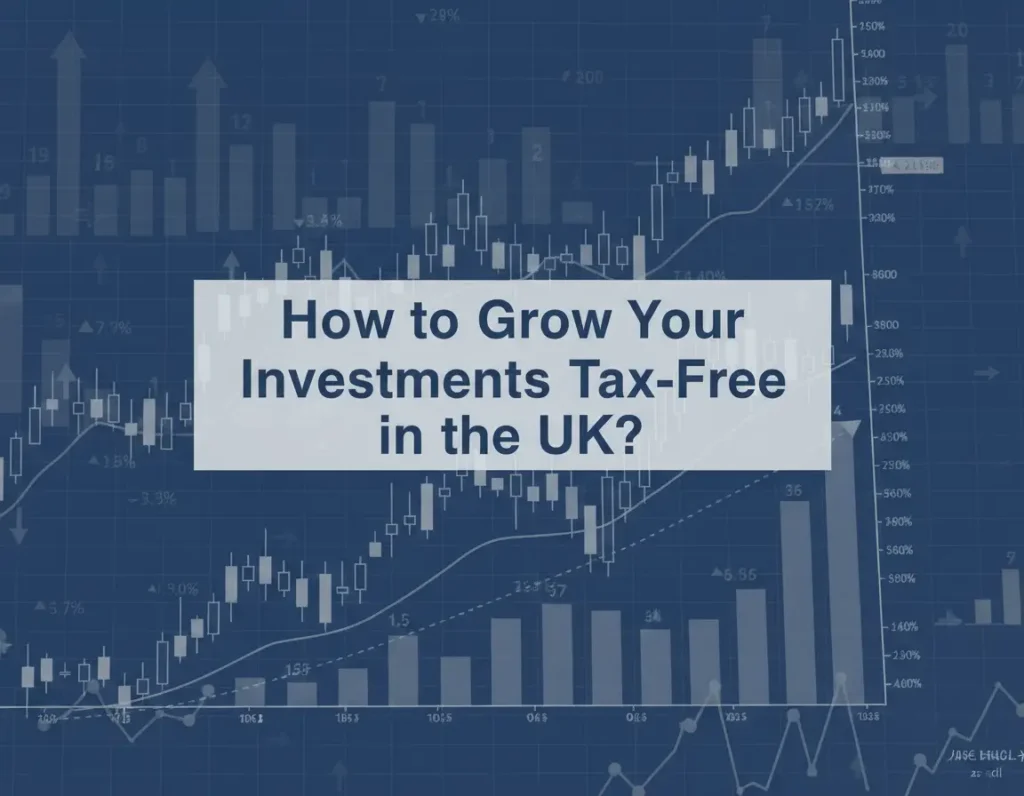A Stocks and Shares ISA is a smart, legal way to invest in shares, funds, and bonds. Whether you’re just starting to invest or already building wealth, this tax-free wrapper can help you get more from your investments.
In this guide, we’ll explain how it works and if this investment is actually worth the risk. But first, let’s start with the basics;
So, What Is a Stocks and Shares ISA?
An individual savings account is an investment plan where you can put your money into things like shares, bonds, or investment funds and make profits. The best thing is, these profits are all tax-free.
Yes, you read it right!
- No capital gains tax
- No income tax on dividends
- And no need to declare it on your tax return
The only catch? There’s a yearly limit on how much you can put in. As of now, it’s £20,000 per tax year.
What Makes These Savings Accounts So Useful?
This isn’t just another savings account. It’s a government-approved way to invest and earn profits tax-free. It’s the best way to grow money without worrying about the tax rates.

Stocks and Shares ISA Tax Benefits Beyond Growth
The biggest draw of a Stocks and Shares ISA is that your investments can grow free from income tax and capital gains tax. But the benefits go beyond just protecting your profits — it can also make life a lot easier when it comes to tax paperwork.
No Capital Gains Tax
Normally, if you sell shares or funds at a profit, you may need to pay capital gains tax if your gains go over the annual allowance. Inside a Stocks and Shares ISA, those profits are completely tax-free, no matter how much you make.
No Income Tax on Dividends
If you hold dividend-paying investments, the payments you receive are also tax-free within your ISA. This is particularly useful for investors building a portfolio focused on regular income.
No Need to Declare to HMRC
Perhaps the most underrated benefit — you don’t have to include ISA income or gains on your tax return. That means less admin, fewer forms, and one less thing to think about at the end of the tax year.
In short, a Stocks and Shares ISA doesn’t just help your money grow; it keeps your tax situation simple and hassle-free — letting you focus on your investments instead of your paperwork.
Where Can You Invest In With A Stocks and Shares ISA?
With a Stocks and Shares ISA, you have plenty of choice. You can invest in:
- Individual shares in UK or global companies
- Index funds
- Mutual funds and ETFs
- Corporate and government bonds
You can build your portfolio based on your goals and how much risk you’re comfortable with.
How Much Risk Is Involved?
While a Stocks and Shares ISA is a valuable opportunity for long-term, tax-free growth but like all investments, it’s not risk-free. It’s different from a general savings account, where your balance stays stable.
It’s different from a savings account, where your balance stays stable. Market dips can lower the value of your investments, but over the long run, the stock market has historically grown. That’s why this ISA works best for long-term goals like retirement or buying a home.
If you’re a beginner, you don’t have to pick stocks yourself. You can choose ready-made funds by Senitel that match your comfort level with risk.
Common Misconceptions About Stocks and Shares ISAs
Stocks and Shares ISAs have been around for years, but there are still plenty of myths that stop people from making the most of them. Let’s clear up some of the most common misunderstandings so you can make informed decisions.
“You need £20,000 to open one.”
Not true. The £20,000 figure is simply the annual maximum you can put in — not the amount you must start with. Many providers allow you to open an ISA with as little as £25 or £50 a month, or a small one-off lump sum. You can build your investments gradually, adding what you can afford over time.
“They’re too risky for beginners.”
It’s true that the value of investments can go down as well as up, but risk can be managed. You don’t have to pick individual company shares. Many ISA providers offer ready-made portfolios, index funds, or balanced investment options designed for different comfort levels. For beginners, starting with a diversified fund can spread risk and reduce the impact of market swings.
“Once your money is in, you can’t touch it.”
Unlike pensions, you can withdraw from a Stocks and Shares ISA at any time without penalties. That said, investments are best left for the long term — ideally five years or more — so they have time to ride out short-term market dips and benefit from compounding. Some flexible ISAs even allow you to withdraw and repay within the same tax year without using more of your allowance.
“You’ll get taxed if your returns are high enough.”
One of the biggest benefits of a Stocks and Shares ISA is that all gains and dividends are completely tax-free, no matter how much you make. You don’t even need to declare them to HMRC. Whether your ISA grows by £500 or £50,000, you keep it all.
“They’re only worth it if you max out your allowance.”
Even if you can’t contribute the full £20,000, every pound you invest benefits from the ISA’s tax-free status. Small, consistent contributions can add up significantly over time — especially when you reinvest dividends.
By understanding what’s fact and what’s myth, you can approach a Stocks and Shares ISA with confidence. It’s not about having a large starting sum or being an investment expert — it’s about giving your money a better chance to grow, tax-free, in a way that suits your goals.

Does Inflation Affect Your ISA?
The short answer is “Yes, inflation does affect ISAs”. While a Stocks and Shares ISA protects your returns from income tax and capital gains tax, it can’t shield your money from the rising cost of living. That’s where smart investing choices come in.
What Inflation Really Means for Your Money
Think of inflation as a slow leak in the buying power of your cash. Over time, the same amount of money buys you less — whether it’s your weekly shop or a holiday abroad. So even if your ISA balance is growing, the real question is: is it growing faster than inflation?
Why Stocks and Shares Can Help?
Cash savings often struggle to keep up, especially when interest rates are low. By contrast, investments like shares, funds, and bonds — which you can hold inside a Stocks and Shares ISA — have the potential to outpace inflation over the long term. While markets can dip in the short run, history shows that equities tend to offer stronger growth than cash.
Time Is Your Ally
Inflation’s bite becomes more noticeable the longer you leave your money standing still. That’s why many investors use a Stocks and Shares ISA for medium- to long-term goals, giving investments time to ride out market ups and downs and grow beyond inflation’s impact.
Keeping Ahead
You can’t stop inflation, but you can plan for it. Diversifying your investments, reinvesting dividends, and checking in on your portfolio regularly can all help your money keep its value — and even grow in real terms.
Your ISA isn’t just about avoiding tax; it’s about making sure your money works hard enough to stay ahead of rising prices.
Long-Term vs. Short-Term Investing in a Stocks and Shares ISA
A Stocks and Shares ISA can grow your money tax-free, but the timeframe you invest for makes a big difference to your results.
Why It Works Best Over 5+ Years?
The stock market naturally has ups and downs. Over short periods, prices can drop suddenly, and your investments can lose value. But history shows that over longer stretches — usually five years or more — markets tend to recover and grow, giving your money time to bounce back and benefit from compounding.
The Risk of Short-Term Investing
If you invest with the idea of pulling money out within a year or two, you could be forced to sell during a market dip, locking in a loss. In the short term, price swings can be unpredictable, and there’s no guarantee your investment will be worth more when you need it.
When Long-Term Makes Sense
A Stocks and Shares ISA is ideal for goals like retirement, buying a home in several years, or funding education down the line. The longer you keep your money invested, the more you can ride out market volatility and let growth build tax-free.
Who Should Consider It?
A Stocks and Shares ISA could be a good fit if you:
- Are investing for the medium or long term (5+ years)
- Are comfortable with some level of risk
- Don’t need immediate access to your money
- Want to avoid complex tax reporting
It’s especially useful if you’re saving for major goals like buying a home, funding education, or retirement planning.
How to Get Started?
- Choose a reliable ISA provider
- Open a Stocks and Shares ISA: Usually online and quick to set up.
- Select your investments: Pick your own or use a managed portfolio.
- Fund your account: Either with a lump sum or monthly payments.
- Know the annual rules: You can’t open more than one Stocks and Shares ISA per tax year.
Common Mistakes to Avoid With a Stocks and Shares ISA
Even with its tax benefits, a Stocks and Shares ISA can be less effective if you make avoidable mistakes.
- Paying into more than one Stocks and Shares ISA in the same tax year
HMRC rules only allows contributions to one Stocks and Shares ISA each year. Paying into more than one can break the rules and may lead to penalties.
- Withdrawing and reinvesting without checking flexibility
If your ISA isn’t flexible, taking money out and paying it back in counts as a new contribution and reduces your £20,000 allowance.
- Not diversifying investments
Putting all your money into one stock or fund increases risk. Spreading investments across different assets helps protect returns.
- Ignoring fees
Platform and fund charges can eat into your returns over time.
Being aware of these pitfalls will help you keep your ISA working in your favor.
Building a Balanced Portfolio Inside Your ISA
A Stocks and Shares ISA gives you the freedom to choose from a wide range of investments such as shares, bonds, funds, and more, all sheltered from income tax and capital gains tax. But having choice means deciding how to mix those investments in a way that suits your goals and comfort with risk. That is where building a balanced portfolio comes in.
Why Balance Matters for Your ISA Portfolio?
A balanced portfolio helps spread risk. If one type of investment performs poorly, others can help offset the losses. For example, shares can deliver strong growth but may fluctuate more, while bonds tend to be more stable but offer lower returns. The right mix reduces the chance of big losses while keeping your money working towards growth.
1. Start with Your Risk Level
Ask yourself how comfortable you are with ups and downs.
Low risk: You might lean more towards bonds, gilts, and cautious funds.
Medium risk: A mix of equities (company shares) and bonds could work well.
High risk: You might choose a higher proportion of shares, including international or emerging markets.
2. Diversify Within Each Asset Type
Do not put all your eggs in one basket. If you are investing in shares, spread them across sectors such as technology, healthcare, and consumer goods, as well as regions like the UK, US, Europe, and Asia. With bonds, mix government and corporate types with different maturity dates.
3. Consider Funds and ETFs
If you do not want to pick individual investments, funds and exchange-traded funds (ETFs) can give you instant diversification. Many ISA providers offer ready-made portfolios tailored to different risk profiles.
4. Review and Rebalance Regularly
Over time, some investments will grow faster than others, changing your original balance. Reviewing once or twice a year and rebalancing by selling some of what has grown too large and topping up areas that have shrunk keeps your portfolio aligned with your goals.
5. Keep Your Timeframe in Mind
If you are investing for a short-term goal, you might keep your portfolio more cautious. For long-term aims like retirement, you can afford to take on more risk knowing there is time to recover from market dips.
By using your Stocks and Shares ISA to hold a balanced mix of assets, you are not just protecting yourself from tax. You are giving your investments the structure they need to grow steadily, weather volatility, and work towards your financial goals.
How to Maximise Your £20,000 ISA Allowance?
The annual £20,000 limit is one of the biggest advantages of a Stocks and Shares ISA — but only if you use it. Every pound you invest within that allowance grows free from income tax and capital gains tax. Here’s how to make the most of it:
Start Early in the Tax Year
The earlier your money goes in, the longer it has to grow tax-free. Even a few extra months in the market can make a difference over the long term.
Spread Your Contributions
If you can’t put in a lump sum, set up monthly payments. This keeps you consistent and takes advantage of pound-cost averaging, helping smooth out market ups and downs.
Top Up with Extra Funds
If you get a bonus, tax refund, or other windfall, consider adding it to your ISA. That way, the money starts working for you sooner and benefits from the tax-free wrapper.
Don’t Waste Unused Allowance
You can’t roll over any unused portion into the next year. Even if you can’t hit the full £20,000, adding whatever you can still boosts your long-term returns.
Keep Your Goals in Mind
Whether you’re saving for retirement, a home, or another big milestone, knowing your end goal will help you decide how much to invest and how to spread your allowance across different assets.

How to Choose the Right ISA Provider?
Choosing the best Stocks and Shares ISA provider can shape your investing experience and, in the long run, your returns. While every investor’s needs are different, there are a few key areas worth comparing before you commit.
1. Platform Fees
Even a small difference in fees can affect your returns over time. Check whether the provider charges a flat annual rate or a percentage of your portfolio’s value, and consider what works best for the amount you plan to invest.
2. Fund and Investment Choices
The range of investments matters. Some providers focus on a smaller selection, while others give access to thousands of shares, funds, and ETFs. If you prefer a straightforward approach, consider looking for providers that offer ready-made portfolios tailored to different risk levels.
3. Ready-Made vs. Self-Select
Think about how hands-on you want to be. Ready-made portfolios can take the guesswork out of investing, while self-select options allow you to build your own mix of investments.
4. Customer Support
When you have questions or need help with a transfer, responsive customer service makes all the difference. Look for providers that make it easy to get clear, timely answers.
5. Useful Extras
Features such as flexible ISA rules, automatic dividend reinvestment, and mobile portfolio tracking can make managing your ISA simpler and more convenient.
Final Thoughts
A Stocks and Shares ISA isn’t just for seasoned investors. It’s a powerful tool for anyone who wants to make their money work harder without giving more to HMRC than they need to. Take it at your pace, start small but don’t miss out on the benefits.


